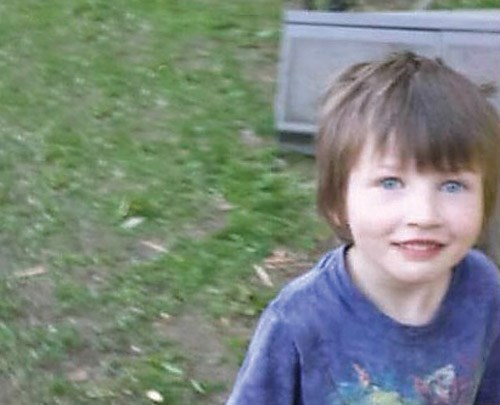The mother of a Hart Highlands Elementary student is furious and exploring legal action after a school staff member cut her son's hair without her permission.
Lorretta LaFortune said her six-year-old son Dane came home last Thursday from school and said Carol Dean, the school's aboriginal education worker, cut his hair.
"Then he took off his hat and I said 'did you cut your hair or did she?'" she said.
"He said she did."
LaFortune immediately called the school but it was after 4 p.m. so she left a message letting them know of the incident.
She then called the School District 57 head office and also left a message.
A representative from the school district returned her call by 8 a.m. Friday and told her to talk to the principal of the school.
Then around 9 a.m., Dean called LaFortune to apologize, saying that Dane had indicated to her that he wanted his hair cut.
"She apologized and said she didn't realize she had overstepped any boundaries and she didn't realize I would be this upset," said LaFortune, who told the worker to stay away from all four of her children at the school.
The principal did not return the phone call from LaFortune.
LaFortune called Prince George RCMP to investigate the incident. She said police told her the principal had said there would be a letter put into the worker's file about the incident.
This does not resolve the issue for LaFortune.
"For me it's just like - big deal - you get a letter, wow," she said.
She is still unclear exactly what occurred and why.
"I have heard different versions of what happened Thursday," said LaFortune.
She said Dean told her that Dane wanted his hair cut but Dane told his mom that Dean had called him into her office and cut his hair. Meanwhile, LaFortune said RCMP informed her that Dane had cut his own hair and the school staff member tried to fix it.
That same day the worker also touched Dane's twin sister's hair as well, LaFortune added. This was a relatively minor incident but it still bothered her.
Danika, Dane's six-year-old twin, had put her hair in a side ponytail all by herself. Danika told her mother Dean had told her it was ugly and fixed her hair.
When LaFortune had questioned Dean on that incident, Dean told LaFortune it was falling out. To LaFortune that was not the concern. The point was Danika had done it herself.
"For me if you are comfortable enough to cut a kid's hair that you're supposed to be guiding, then what's next? What else are you going to do? Cutting a kid's hair is pretty huge - my own mother won't even get my children's hair cut without my permission," said LaFortune, who said she is considering getting legal counsel on the matter.
The police have concluded their investigation of the incident.
"There was no criminal offence because the teacher said the boy had asked she cut his hair so that his bangs were out of his eyes at his request," said Prince George RCMP Cpl. Craig Douglass.
"She maybe had no right to do that necessarily, but it certainly was not criminal. Her intentions were all good so it is not a police issue."
During an incident like this the School District 57 procedure is in accordance with Appendix A of By-Law 4, said school superintendent Brian Pepper.
If the incident can't be dealt with and resolved immediately, it is referred to the principal of the school. There are different end points depending on the circumstances, Pepper said.
"So when there is a concern raised particularly in a school about a staff member, if it's not solved by the educational assistant or aboriginal worker in consultation with the student or parent, it eventually finds its way to the vice principal and for schools without a vice principal it will go to the principal," said Pepper. At that point the principal, who has a solid knowledge of the employee contract, will begin an investigation, he added.
Upon conclusion of the investigation the principal makes a decision on what to do. It could be determined no further action is necessary.
There could be an oral warning or direction, sometimes a written direction, moving right up to suspension or termination, depending on the situation and how many incidents have occurred, said Pepper.
As of press time, Dean had not responded to a Citizen request for an interview.



